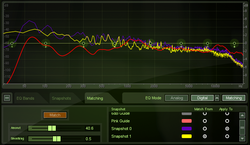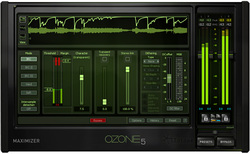|
Mastering audio for publishing is an intimidating task. When you read the literature, most people say that you need to leave the mastering to the professionals, if you can. In my experience, they are right: whenever, in past project, I relied on professional mastering engineers to produce my masters, I was astonished by the result. However, there are situations (zero-budget projects being one of them ;-) where you will want to master yourself. Enter the world of the mastering plugins. There are 3 or 4 excellent mastering plugins in the market, and Izotope's Ozone5 is one of them. Since I'm an Ozone5 user, let me share 2 experiences with you - I hope they can help or inspire someone. Enjoy.  Matching EQ: if you want your production to sound like this or that reference track, the Ozone5 Matching EQ is your tool. It's dead easy: you create 2 snapshots - one from the reference track and one from your track that you are producing. Set the first snapshot as 'reference' and the second one as 'target'. Click MATCH, and Ozone5 will propose an EQ curve (the red one in the figure to the left), which you can soften and smooth (you don't want to apply an EQ curve that is too edgy during mastering). I've used a lot of matching EQ on my last project, and it gives great results.  Maximizing. Or: fighting the loudness war. A lot, and I mean A LOT, has been written about the subject of loudness. In Ozone5, you literally see the compression happening (upper pane in the figure to the left), and you just play with your threshold to control the amount of maximizing compression. I used a peak of -0.6dB and an average RMS during the signature parts of the track of -4.0dB. I'm still way above the K-12 norm, I must admit, but hey I was producing club tracks - right?
0 Comments
Leave a Reply. |
authorFrancis Depuydt, owner of Roth Eleven Productions. Archives
December 2021
Categories |

 RSS Feed
RSS Feed
